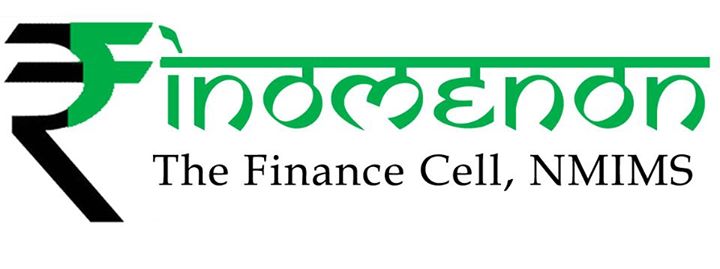Impact of the upcoming UP and Punjab elections on the Indian political scenario
November 12, 2016 Leave a comment
The Parliament is the supreme legislative body of our country. It comprises two houses – Lok Sabha (Lower House) and Rajya Sabha (Upper House). BJP, who is ruling at the centre currently, has a majority of seats in Lok Sabha (281 seats). However, in the Rajya Sabha it does not have a majority. For any law or legislation to be passed, the motion has to be passed by both the houses. In the current term, while most proposals get passed in the Lok Sabha, they are unable to garner majority votes in the Rajya Sabha. Due to this, the current government has seen issues in passing bills – most notably the GST Bill.
For BJP to be an effective government, it needs a majority in the Rajya Sabha. This will ensure that major policy paralysis is removed and will also substantially improve BJP’s prospects in the 2019 Centre elections. This is where Uttar Pradesh comes into play. It holds the maximum number of seats from any state (31 seats) out of a total of 245 seats. Historically, UP has been governed alternately by the Samajwadi Party (SP) and the Bahujan Samajwadi Party (BSP). It is an uphill task for BJP led NDA to create a stronghold in such a scenario.
For the two national parties – the BJP and the Congress – the Uttar Pradesh election is crucial not only to make their presence felt in the state where they have been relegated to the margins by regional outfits but also because the outcome will set the tone for the 2019 general elections. The BJP leaders are of the view that the Congress is at its weakest as Rahul Gandhi has failed to make an impact, while the opposition is demoralised and fragmented. One big reason for the BJP’s loss in the Bihar election was the coming together of the Janata Dal-United (JD-U), Rashtriya Janata Dal (RJD), Congress and smaller parties as the grand alliance. Uttar Pradesh’s ruling Samajwadi Party (SP) that walked out of the alliance at the last hour is now desperate for such a tie up and has its reasons to seek partners. The party is battling a damaging power struggle in the first family that may cost it the support of Yadavs and Muslims, who have traditionally gone with the SP.
The Congress and SP are also considering an alliance. However, the sticking point, in such an arrangement could be the share of seats. Political experts are of the opinion that the Congress should ask for more seats in the Lok Sabha elections and give the SP a larger share in assembly polls, as its main interest lies in ousting Modi and installing party vice-president Rahul at the Centre. Mulayam fears an erosion of Muslim support if the Congress revives in the state.
Finally, BSP has had a fair chance at the elections. But there seems to be some shake up of faith after some of its main nominees defected alleges selling of seats by Mayawati. With Yogi Adityanath as the prospective Chief Ministerial candidate for BJP, it seems like the real fight will be between Modi and Mayawati.
In Punjab, currently the Shiromani Akali Dal (SAD) and BJP alliance are in power. However, this status quo is being seriously challenged by the Aam Aadmi Party (AAP). Being a new entity in the state, Akali Dal is unable to fathom the level of threat AAP poses. To top this, Navjot Singh Sidhu left BJP to join AAP. However, these talks fell through and he has now joined an independent party ‘Awaaz-e-Punjab’. Sidhu’s new party is expected to throw up challenges to the AAP. Given his popularity and a decade long stint as Lok Sabha MP, can pose a tough challenge to Capt Amarinder Singh of Congress. Having won three consecutive Lok Sabha elections, he had been a star campaigner due to his oratory skills.
A major factor defining the 2019 general election will be the index of opposition unity. Without that, the opposition won’t be able to exploit any anti-incumbency Modi may face in 2019. The opposition in Bihar defeated the BJP last year only because it came together. Nationally, the opposition remains a very divided house between regional parties, a dying Congress and an impatient Aam Aadmi Party trying to scale up at the speed of light. A national Mahagatbandhan is a near impossibility, even as all parties, even the NDA allies, can see the BJP behemoth is out to devour them.
The Aam Aadmi Party is very clear in its agenda. It wants to replace the Congress, state by state, no matter how long it takes. It aspires to occupy the centrist space in national politics. The AAP’s rise should be welcome, as the rise of any new party strengthens a democracy beset with old dynasties and outdated ideologies. Particularly given that the Congress party refuses to help itself, you can’t blame the AAP for trying to make the most of the opportunity.
However, the Aam Aadmi Party won’t, by 2019, be in a position to challenge Modi and the BJP in a serious way. The AAP is too ambitious to commit to pre-poll alliances, especially with the Congress. So the AAP’s expansionism, between now and 2019, will only help further fragment the opposition.
For these reasons, the result in Punjab will have greater implications for national politics. If the AAP wins Punjab, it will expand even more aggressively. By winning Punjab, the AAP will have broken the myth that it is an urban party, a one-state phenomenon, that it can’t deal with caste or rural society.
Written By- Disha Gurnani, NMIMS Mumbai
